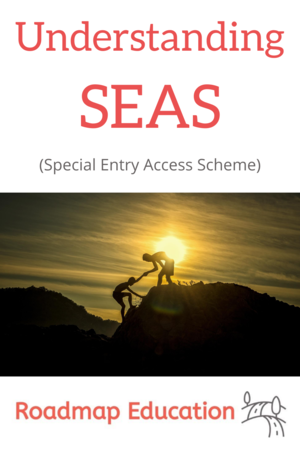Understanding SEAS
Updated 26th May 2022
In Victoria, we use the SEAS (Special Entry Access Scheme) application to let universities and TAFEs know if something has been happening in your life that has made it difficult for you to study and prepare for assessment as well as you would have liked to. Let’s look at how it’s structured and what you need to know about preparing your SEAS application.
So what is it?
Once you’ve created your VTAC application and put some courses into your preference list, you’ll be able to submit a SEAS application. It’s not recognised by every tertiary institution or for all courses, but in general, it’s a way for you to let VTAC know how you have been affected by circumstances beyond your control. VTAC will assess your application and, if they agree that you’ve been adversely affected, they will add points to your aggregate, so you will end up with an adjusted ATAR to be used by the tertiary institutions who do allow for SEAS. You won’t find out whether or not your application has been successful, or how much your ATAR was adjusted by.
It’s split into 4 categories
Category 1: Personal information and location
This category is the easiest to apply for and VTAC encourages everyone to do it. The basic idea is that based on information already in your application (eg your address, school and simple information about your family) to work out if you should be recognised for these factors or if you’re from an under-represented group.
Category 2: Disadvantaged Financial Background
This category takes into account how your studies might have been affected if your family is disadvantaged financially. If you or your parent or guardian receive a benefit from Centrelink you can apply for this category and use the payment as evidence, however you don’t need to be receiving a benefit from Centrelink to be eligible.
Category 3: Disability or Medical Condition
This category looks at how a disability or medical condition has affected your education.
Category 4: Difficult Circumstances
This category takes into account circumstances such as being a refugee or asylum seeker, family difficulties like the illness or death of a family member or the separation of parents, bullying or any form of abuse, and any other circumstance that is beyond your control and over and above what most students have to cope with.
How to apply
VTAC already has all the information it needs to assess for Category 1, so to apply all you need to do is create your application and select Category 1, and then VTAC will do the rest.
For Category 2, 3 and 4 it depends on your exact circumstances but in most cases you need to supply an impact statement by you and a support statement from someone not related to you who is over 21 and has an understanding of what’s been happening, for example a medical professional, councillor, teacher or family friend. The main focus of both statements is how the circumstances have affected your education, so you need to explain how or why you’ve been unable to study effectively, whether you had to miss a lot of classes, anything that made it difficult for you to do as well at school as you would have liked.
If you think you should apply for SEAS, make sure you head to the VTAC website to get all of the up-to-date information about how to apply for each of the categories, and if you’re still not sure, I suggest you check with a teacher or support staff at your school so they can help you. This scheme is there to create some equity and recognition for the fact that some students have more to overcome than others when it comes to school, so if you’re eligible make sure you get the assistance you need.
Do you know you’ll feel better with a plan for next year, but have no time to work out what you want to do? With Your PERFECT Preference List I’ll do all the research FOR you. Jump in now and ditch all the stress because you’ll know where you’re going and how you’ll get there no matter what results you get.

